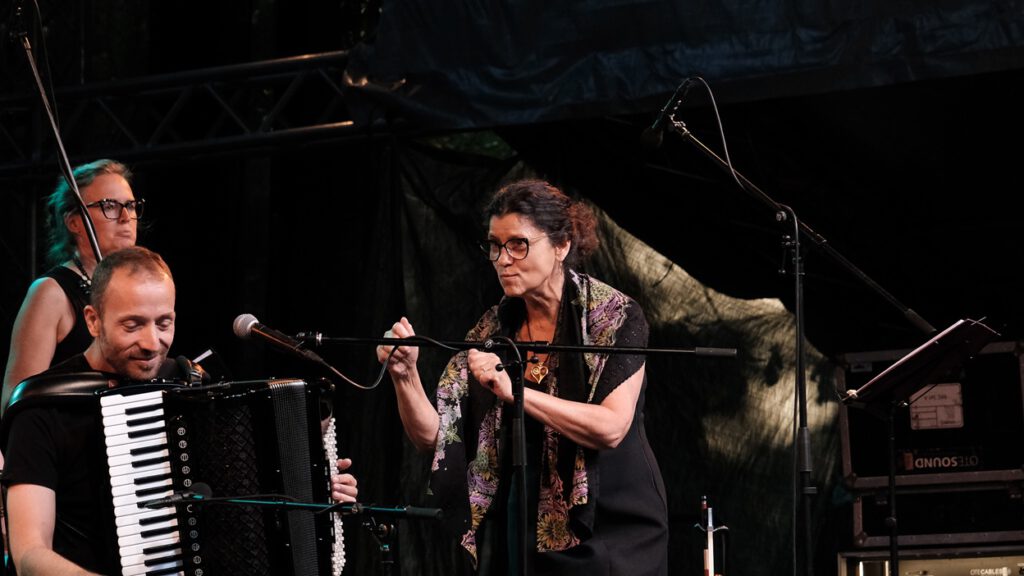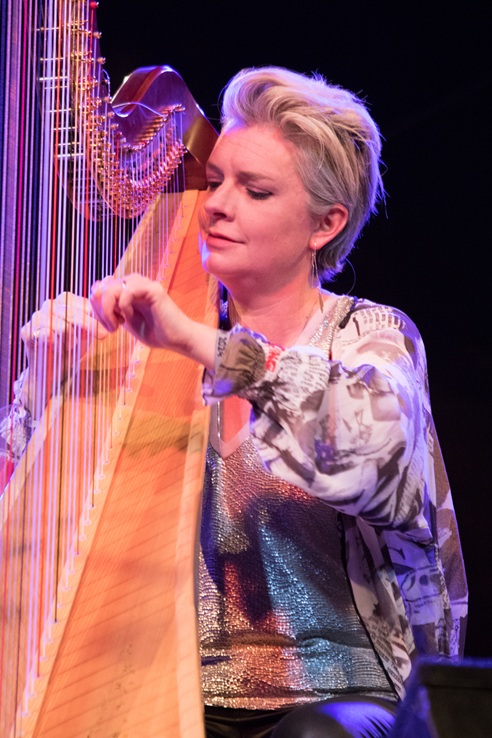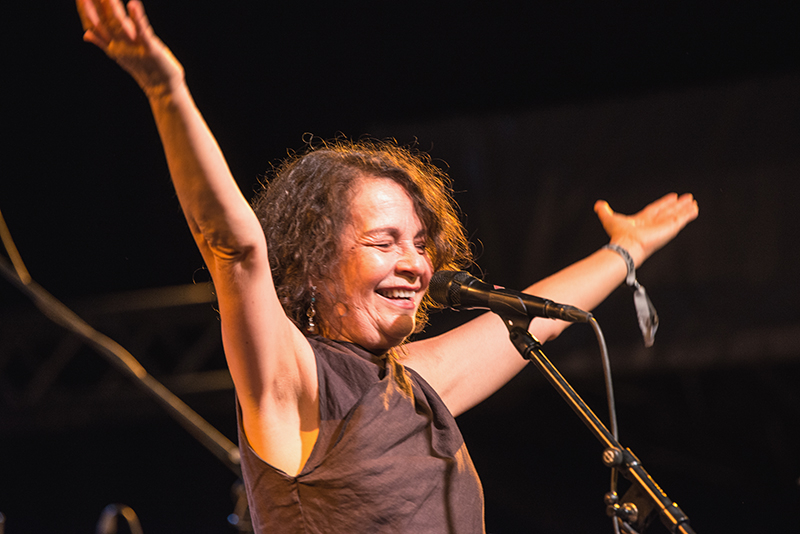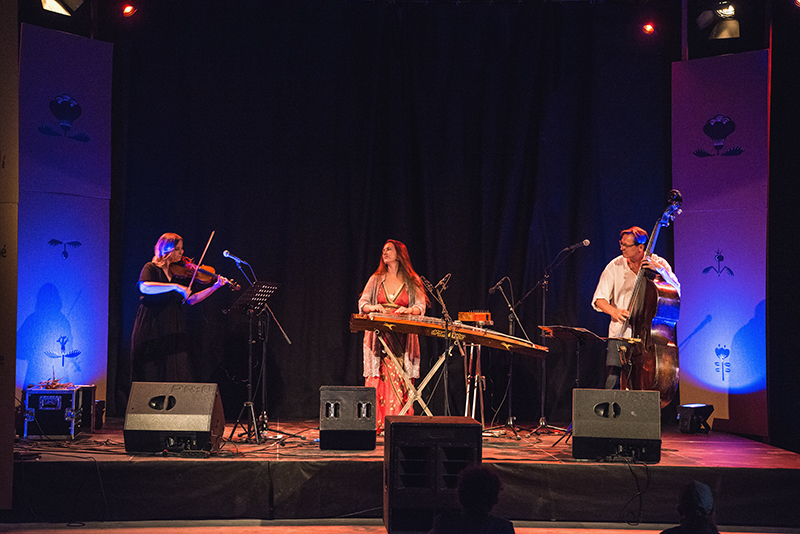Folk Holidays festival achieved the position #1 at the Transglobal World Music Festival Awards 2024
This chronicle is by Petr Dorůžka, who was the evaluator of the festival on this edition.
The festival started in 1986, as a semi-underground event 3 years before the fall of the Berlin Wall. At that time, Folk Holidays was focused on singer-songwriters, a protest movement in Czechoslovakia at the time of communist rule. During the following decades, genre boundaries disappeared, the terms “folk” or “world” were infused by traditional genres such as flamenco, blues or Celtic music, and of course, music coming from Asia, Africa and other continents. The festival is held in a small town Náměšť, south of Brno, the regional capital of Moravia, east Czechia.
Michal Schmidt (*1960) became the program director in 1998. Since then, he has been building the festival identity for a quarter of a century.
In this period, Folk Holidays played a crucial role for the Czech audiences, discovering foreign cultures, new musical genres. That was strongly needed, as the country is landlocked, never had any colonies, and there are no strong immigrant communities. The festival takes place in the castle park in Náměšť-nad-Oslavou in the last days of July and early August. The program lasts a full 8 days, from Saturday to Saturday. The evening concerts are complemented by a varied selection of daily workshops and courses, covering both music, art, and practical disciplines. Some examples: tango and milonga dancing, instrument building, jewellery crafts.
For decades the Folk Holidays keep the format of an intimate festival, with 800-1300 people at a concert, moderately filling the park in front of the Náměšť castle. Non-mainstream programming actually regulates the size of the crowd, so it’s the more adventurous section of the listeners who decide to spend their holidays in Náměšť.
With a small festival and limited budget, it is not easy to bring world-class musicians like Sona Jobarteh, Sam Lee or Eliza Carthy to the Moravian countryside, but Michal Schmidt developed some efficient tricks: “From Monday to Thursday, bands on tour are less busy and cheaper than on weekends, when they earn higher fees at big festivals. The second trick is artist-led workshops. We invite musicians to spend up to 4 days at the festival. And the third trick is references. The Folk Holidays festival has been well received by many musicians and agencies over the years, and they pass it on.”
One fine example was set by the great Welsh harp player Catrin Finch. During the “Harp Summit” concert in Náměšť in 2019, she was joined by the Senegalese kora player Seckou Keita and Colombian harp virtuoso Edmar Castañeda. And it was his breathtaking harp solos that inspired a new song, Dual Rising, recorded by Catrin Finch & Seckou Keita on their next album, Echo.
While the festival still keeps it’s intimate atmosphere, it is also expanding without losing its spark. This may sound like a contradiction, so I’ll try to explain. To fill the intermissions on the main stage, a small tent in the park is used to present yet unknown bands or children’s theatre. This year was different, thanks to Dis is Markéta, a highly promising band from Slovakia. For many visitors, their set was one of the program highlights. So the stage considered as “secondary” became main point of interest for the first time.
Here is a short survey of other main attractions of the 2024 edition:
Ensemble B11 (Venezuela): The combination of 5 female singers and 4 singer-instrumentalists created a very flexible and ever-changing core. The show started with a cappella singing, soon switched to sophisticated arrangements with bass guitar and cuatro, a distinctive instrument related to guitar, and ended up in a high-energy gunfire of Afro-Latin percussion. The highlight of this part was the horizontal cumaco drum. One player sits on it and beats the membrane with mallets. During the piece, he is subtly joined by another player called a “palitero”, squatting behind him, pounding the body of the drum, made from the massive hollow trunk of an avocado tree.
Iva Bittová & Pavel Fischer & Jakub Jedlinský & Babačka (CZ): Bittová is one of the most sought after Czech artists: violin player, singer, improviser, and expert on traditional styles of Mid-Eastern Europe. With musicians playing accordion, violin and natural voices of the multi-generation mixed choir Bittová formed a village not far from Náměšť, she took the audience on a time machine tour. The destination was a long forgotten era, when making music at home or with friends was a natural part of the daily lifestyle in countryside.
Picture of Iva Bittová & Pavel Fischer & Jakub Jedlinský & Babačka by Vojmír Blazek:

 Catrin Finch & Aoife Ní Bhriain (Wales-Ireland): Catrin Finch is a regular performer in Náměšť, but each time with a different line-up. The violin virtuoso Aoife Ni Bhriain draws both from classical music and Irish tunes. The result was an adventurous yet fragile search for common roots of genres we now take as something fixed and frozen.
Catrin Finch & Aoife Ní Bhriain (Wales-Ireland): Catrin Finch is a regular performer in Náměšť, but each time with a different line-up. The violin virtuoso Aoife Ni Bhriain draws both from classical music and Irish tunes. The result was an adventurous yet fragile search for common roots of genres we now take as something fixed and frozen.
Picture of Catrin Finch by Barka Fabiánová:
Lucia Pulido (Colombia-Mexico): One of the most original female voices in Latin America. She draws from the vocal language of the herders in the Colombian plains, but also from the vast area of Latin American melodies and from experimental music. On stage, her band was equally innovative, with a surprising array of colors and textures. New Zealand-born Misha Marks switched between latarra, an oil can guitar, tuba and baritone horn. This very special instrument, now used by Balkan brass bands, was a part of Austrian military bands, and entered Mexico thanks to Emperor Maximilian, the younger brother of the Habsburg monarch Franz Joseph I, who ruled the Náměšť region and Czech countries 150 years ago. Ulises Martínez added some very special licks on the violin, and also played guitar and it’s 4stringed Mexican cousin Leona. The repertoire was a celebration of common ties between Mexico and Colombia, including rancheras and other genres that have been travelling between both countries during the past centuries. And of course, Lucia Pulido’s voice was filled with such a huge range of emotions you can only find in Spanish language songs. If you listened deeply enough, in her precise work with rhythmical flow and well planned micro stops you could hear the phrasing of the one and only Chavela Vargas.
Picture of Lucia Pulido by Ivan Prokop:

Barbora Xu (Cz) is the stage name of Barbora Šilhánová. Her multifaceted music draws from 3 different sources: the Finnish kantele tradition, the music of the Chinese zither guzheng and the polyphonies of aboriginal inhabitants of Taiwan, the Bunun people, where Barbora spent one year on ethnographical research. Because guzheng and kantele are part of the zither family, mastering both instruments helps Barbora to move freely between Chinese and Finnish traditions and inventing new approaches to the instrument. And that was exactly the case of her night concert, with double bass and violin accompaniment. The result was mostly slow and quiet songs, embellished with magic details, but always refreshing and never following a routine.
Picture of Barbora Xu by Ivan Prokop:


